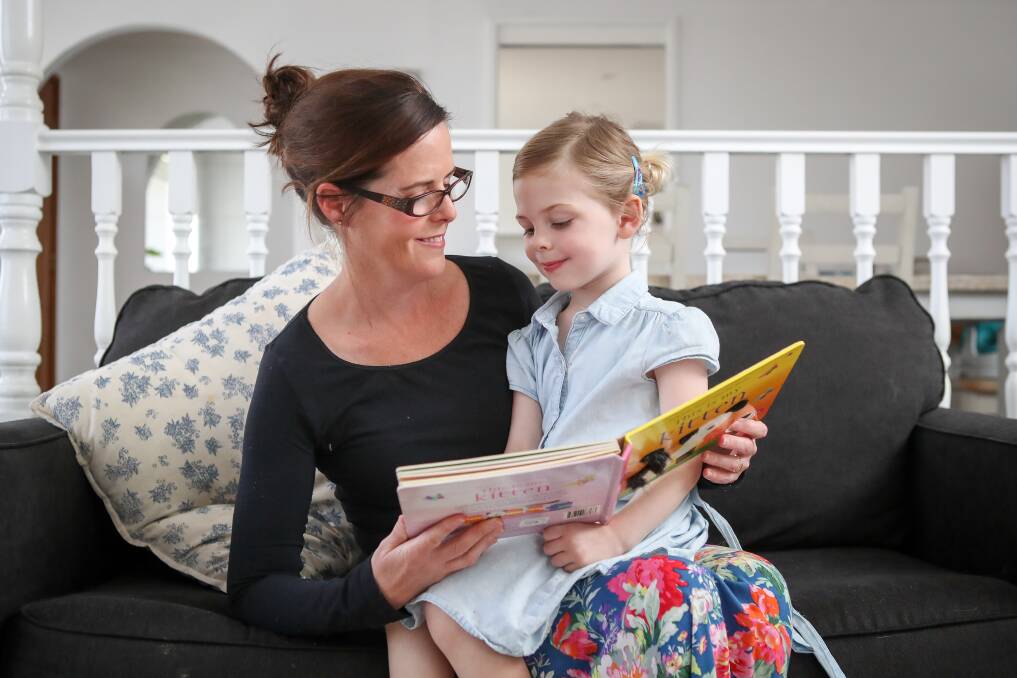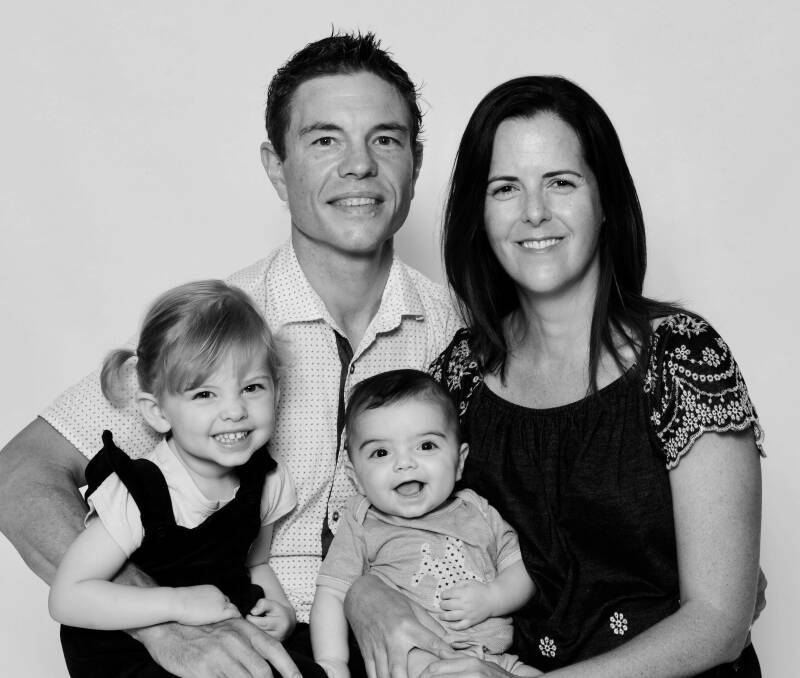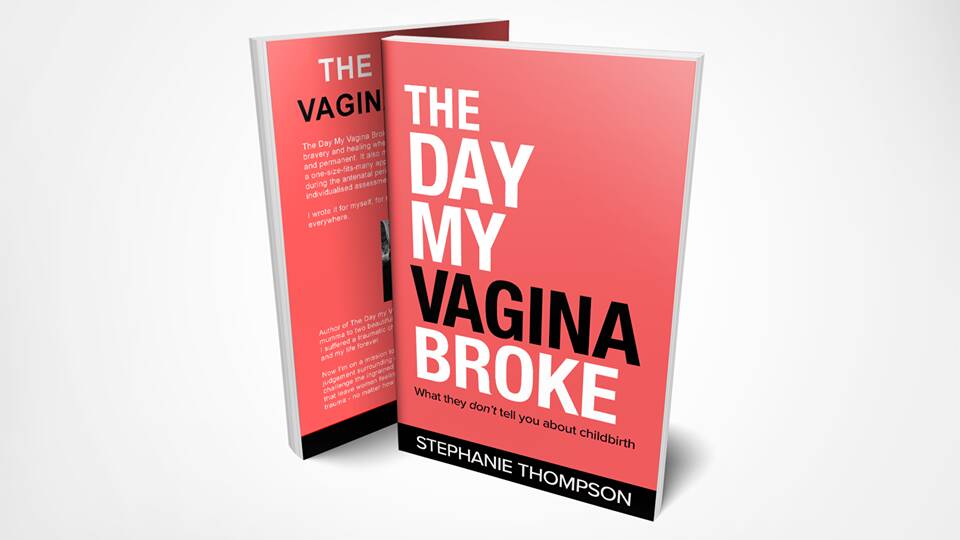
Each day, Stephanie Thompson's bladder and uterus slowly slide down her birth canal until, by the end of the day, they're hanging outside her vagina.
Subscribe now for unlimited access.
or signup to continue reading
The Woonona mother-of-two suffers from uterine and bladder prolapse - a result of traumatic childbirth, and one that is not often discussed at antenatal classes or mothers' groups.
But it's all too common - and more likely to occur as women get older. In fact, according to the Continence Foundation of Australia, half of all women over the age of 50 who have given birth have some level of prolapse.
There's different stages of prolapse, which occurs when pelvic floor muscles weaken and organs press down on the vagina.

Mrs Thompson, now 39, experiences some of the most severe symptoms and for her - and many other women - there's currently no surgery that can fix it.
That's why she's penned her first book, The Day My Vagina Broke, to raise awareness of birth trauma and help all the "other broken mums out there".
The damage is extensive and the pain unrelenting.
"I endured a 25-hour labour, my baby was posterior and was stuck and an episiotomy (cut) and forceps were used to get her out," she said.
"However the damage from the forceps tore the muscle off the bone which means I have no pelvic floor muscle on the right side.
"Now I'm permanently living with my bladder and uterus sliding down the vaginal canal and by the end of the day they come out the opening of the vagina and just hang there. ...You can try and push it back in, but it's like trying to push in a balloon full of water.

"I haven't really even been able to say those words for almost four years - it's been so difficult for me to describe what I have to go through."
Mrs Thompson, and her husband Mark, were overjoyed with the birth of their healthy little girl Elsie, who's nearly four years old.
But the physical - and psychological - scars of the traumatic birth at a public hospital are evident.
"The damage is extensive and the pain unrelenting," Mrs Thompson said.
"I can't stand or walk for longer than 10 minutes without being in pain; I have trouble emptying my bladder and my bowel; it's hard to have sex. I can't really function like a normal human being, I've been a teacher for many years but I can't work like this.
"The only relief comes in sitting or lying down, and it's only after lying down for 10 or so hours of sleep that my organs go back into place."
Mrs Thompson has tried everything - from pelvic floor muscle training to "stimulate the muscle back" to getting fitted for pessaries which are placed into the vagina to provide support. Nothing has worked.
"There are surgical interventions available - but I've been told in my case surgery would have a 90 per cent failure rate within two years," she said.
Implantable mesh has also been used in prolapse repair - yet serious problems have been reported with certain mesh products including erosion of mesh into the vagina and chronic pain.
However research into surgical options is continuing - including two trials at Nepean Hospital by Professor Hanz Peter Dietz, an obstetrician and gynaecologist from Sydney university.
"Treatment options for prolapse depend on the causes and the severity of pelvic floor damage suffered at birth," he said.
"In some instances a prolapse can be fixed with a simple 30-minute operation with high success rates. In other cases cure is very unlikely with conventional surgery.
"We have two ongoing trials in our unit that focus on prolapse in women with major pelvic floor damage."
Prof Dietz said pregnant women needed to be "treated as adults".
"They need to be informed of the risks of childbirth during antenatal care, and we need to enable them to make decisions themselves once decisions have to be made in labour," he said.
"In particular the decision on delivery mode (caesarean, forceps or vacuum) when the bay gets stuck needs to be made by the woman herself whenever possible."
The NSW government introduced its Towards Normal Birth policy in 2010, due to concerns about rising caesarean rates. The policy, now under review, aims to decrease C-sections.
However Prof Dietz believes demographic changes - such as older first-time mums and rising obesity - were increasing the risk of serious injury with natural childbirth.
"Babies are bigger, the tissues are stiffer, and the process of labour is not as smooth and automatic as it would be in younger women of normal weight," he said.
"In order to avoid caesareans doctors do more and more forceps ... which further increases the risk of major trauma to the mother, such as pelvic floor muscle and anal sphincter tears."
Mrs Thompson was able to have another child, Louis, now two. And with the help of Prof Dietz and a new obstetrician Simon Winder, she was even able to have a safe, natural birth.
"When you're pregnant your uterus naturally lifts out and up and actually helps the prolapse symptoms - which it did. I was able to safely deliver Louis vaginally and it was amazing.
"However I feel I should never have been allowed to push my first baby out given the complications. I believe we need to start assessing pregnant women as individuals, not one-size-fits-most."
She's used online crowdfunding to get her book published; visit startsomegood.com/bravemumma

